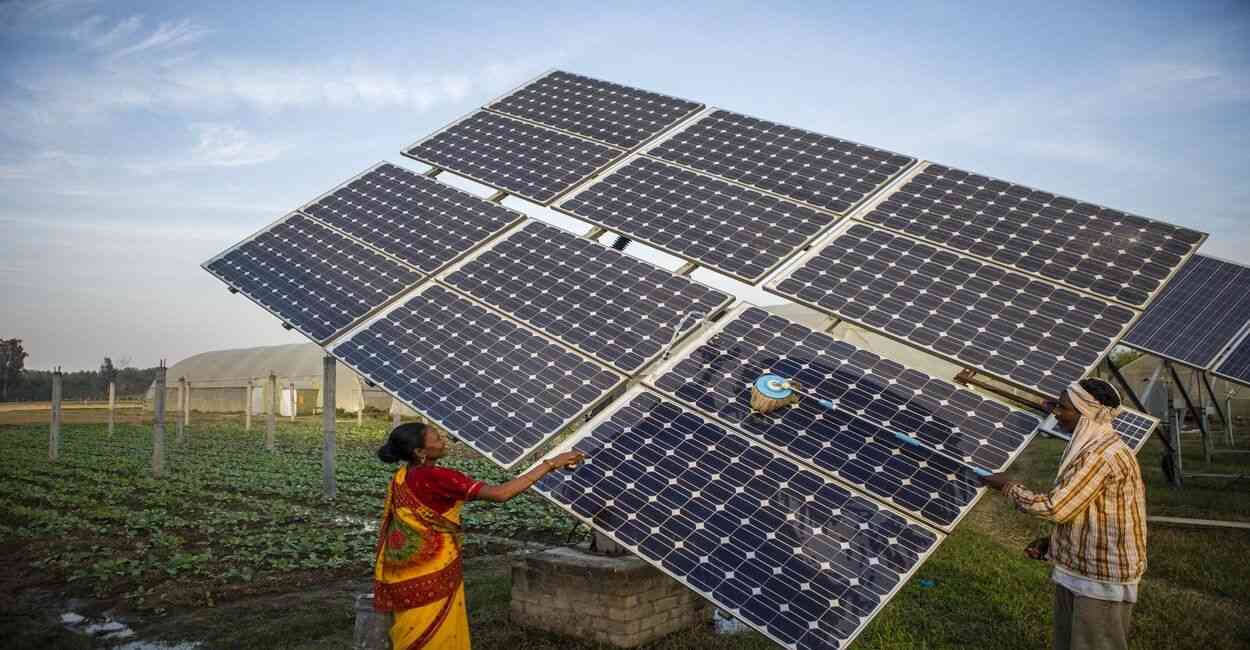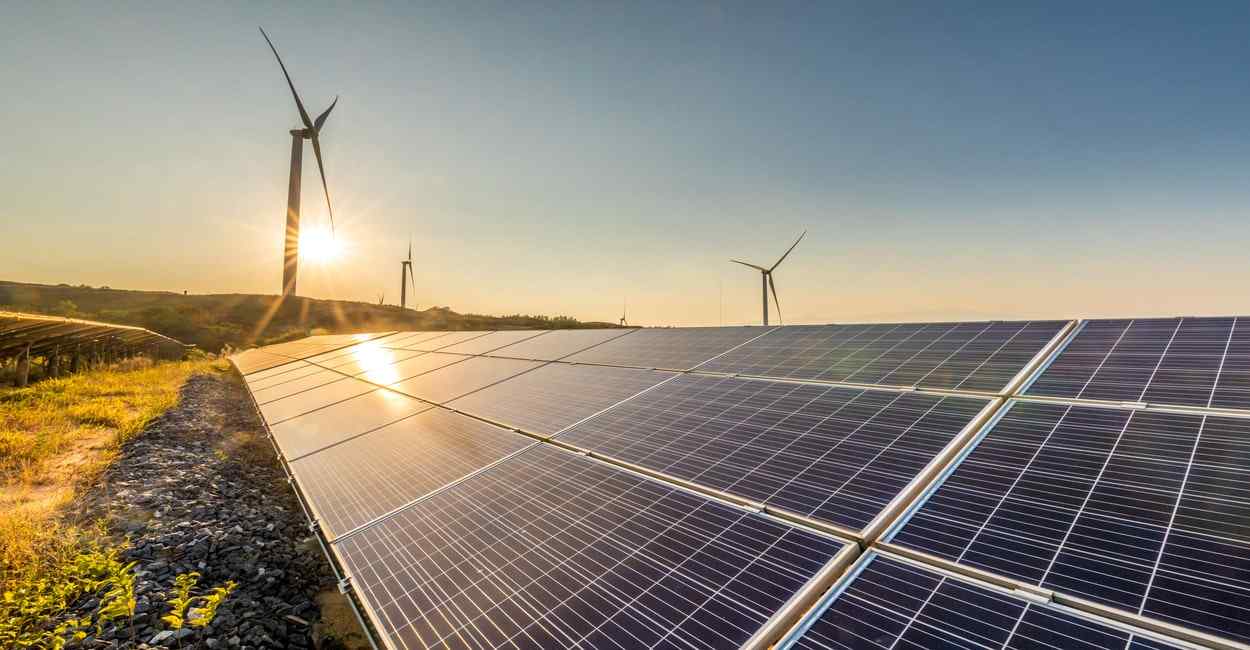The Role Of Solar Energy In Disaster Resilience And Mitigation

Solar energy can play a crucial role in disaster resilience and mitigation. In the aftermath of a disaster, power outages are common and can last for days or even weeks, leaving affected communities without access to electricity. This can make it difficult to access critical services such as hospitals, communication networks, and emergency response systems.
Solar energy can provide a reliable source of power during these times, as solar panels can continue to generate electricity even if the grid goes down. This can help ensure that critical services remain operational and that people can stay connected and informed during and after a disaster.
Moreover, using solar energy as a primary source of power can also help mitigate the impact of climate change, which is driving more frequent and severe weather events. By reducing our dependence on fossil fuels, we can help reduce greenhouse gas emissions and slow the pace of climate change, making disasters less frequent and less severe.
Overall, incorporating solar energy into disaster preparedness plans can help improve resilience and mitigate the impact of disasters. It's an important step towards building a more sustainable and resilient future.
Solar Energy For Disaster Response
Solar energy can be a valuable tool for disaster response efforts. In the immediate aftermath of a disaster, power outages are common and can make it difficult to provide critical services such as medical care, food and water distribution, and communication networks. Solar energy can help address these challenges by providing a reliable source of power even in areas where the grid has been disrupted.
Portable solar generators can be deployed quickly to provide power to emergency response teams and equipment. Solar panels can also be installed on temporary shelters and medical facilities to provide reliable power for lighting, communication, and medical equipment.
In addition, solar energy can help communities rebuild after a disaster. By installing solar panels on homes, businesses, and public buildings, communities can create a more resilient energy system that is less vulnerable to future disasters. Solar energy can also help reduce costs for energy, which can be important in areas where resources are already strained.
Overall, solar energy can play an important role in disaster response efforts by providing a reliable and sustainable source of power for critical services and helping communities rebuild in the aftermath of a disaster. It's an important tool to consider when preparing for and responding to disasters.
Disaster Preparedness And Solar Energy
Solar energy can be a valuable component of disaster preparedness plans. In the event of a disaster, power outages are common and can last for days or even weeks. Having a reliable source of power is critical for ensuring access to critical services such as hospitals, communication networks, and emergency response systems.
By incorporating solar energy into disaster preparedness plans, communities can ensure that they have a reliable source of power during and after a disaster. This can be accomplished by installing solar panels on homes, businesses, and public buildings, as well as deploying portable solar generators to provide power for emergency response teams and equipment.
In addition, using solar energy as a primary source of power can help mitigate the impact of climate change, which is driving more frequent and severe weather events. By reducing our dependence on fossil fuels, we can help reduce greenhouse gas emissions and slow the pace of climate change, making disasters less frequent and less severe.
Overall, incorporating solar energy into disaster preparedness plans can help improve resilience and ensure that critical services remain operational during and after a disaster. It's an important step towards building a more sustainable and resilient future.
Solar Energy For Disaster Recovery
Solar energy can be an excellent option for disaster recovery, as it is a reliable and renewable source of power that can operate independently of the electrical grid. Here are a few ways in which solar energy can be used for disaster recovery:
Emergency power: Solar panels can be used to generate electricity to power critical infrastructure such as hospitals, emergency response centers, and shelters. In the aftermath of a disaster, these facilities may lose power, but with a solar-powered backup system, they can continue to operate.
Portable solar panels: Portable solar panels can be used to power communication devices, lighting, and small appliances. These can be particularly useful in areas that are cut off from the electrical grid, or where the grid is overloaded and cannot provide reliable power.
Solar water purification: Solar-powered water purification systems can be used to provide clean drinking water in disaster-affected areas. These systems can be set up quickly and are cost-effective, making them ideal for emergency situations.
Solar-powered refrigeration: Solar-powered refrigeration systems can be used to keep medical supplies and food fresh in disaster-affected areas. These systems are particularly useful in areas where the electrical grid is unreliable or non-existent.
Overall, solar energy is a versatile and reliable source of power that can be used for a wide range of applications in disaster recovery. By investing in solar-powered systems, disaster-affected communities can increase their resilience and ensure that critical services can continue to operate in the aftermath of a disaster.

Solar Energy For Critical Infrastructure
Solar energy can be an excellent option for powering critical infrastructure as it is a reliable and renewable source of energy that can operate independently of the electrical grid. Here are a few ways in which solar energy can be used for critical infrastructure:
Solar-powered microgrids: Microgrids are small-scale, self-contained power systems that can operate independently of the larger electrical grid. Solar-powered microgrids can be used to power critical infrastructure such as hospitals, data centers, and emergency response centers. These microgrids can be designed to operate in tandem with the electrical grid, or they can be designed to operate independently in the event of a power outage.
Solar-powered communication systems: Communication systems are critical infrastructure that is often reliant on electricity. Solar-powered communication systems can be used to provide reliable communication services during power outages or in remote locations where the electrical grid is not available. These systems can be used to support emergency response efforts, public safety, and other critical services.
Solar-powered water treatment facilities: Water treatment facilities are critical infrastructure that requires reliable power to operate. Solar-powered water treatment facilities can be used to provide clean drinking water in remote locations or in areas with unreliable electricity. These systems can be designed to operate independently or in tandem with the electrical grid.
Solar-powered transportation: Solar-powered transportation systems such as electric buses, trains, and other vehicles can be used to power critical infrastructure. These systems can reduce emissions and provide a reliable source of transportation in urban areas.
Overall, solar energy is a reliable and renewable source of power that can be used to power critical infrastructure. By investing in solar-powered systems, communities can increase their resilience and ensure that critical services can continue to operate even during power outages or in remote locations where the electrical grid is not available.
Solar Energy For Disaster-Prone Areas
Solar energy can be an excellent option for disaster-prone areas as it is a reliable and renewable source of energy that can operate independently of the electrical grid. Here are a few ways in which solar energy can be used in disaster-prone areas:
Off-grid solar power systems: Off-grid solar power systems can be used to power homes and businesses in remote locations where the electrical grid is not available. These systems can provide a reliable source of power, even during power outages caused by natural disasters.
Solar-powered water pumps: Solar-powered water pumps can be used to provide access to clean water in disaster-prone areas. These pumps can be used to extract water from wells or other sources and can operate independently of the electrical grid.
Solar-powered lighting: Solar-powered lighting can be used to provide reliable lighting in disaster-prone areas. These lighting systems can be used to light up streets, homes, and businesses, providing safety and security during power outages.
Mobile solar power systems: Mobile solar power systems can be used to power emergency response efforts in disaster-prone areas. These systems can be deployed quickly to provide power for communications equipment, lighting, and other critical infrastructure.
Solar-powered irrigation systems: Solar-powered irrigation systems can be used to provide reliable access to water for agriculture in disaster-prone areas. These systems can operate independently of the electrical grid and can help ensure that crops continue to grow even during power outages caused by natural disasters.
Solar Energy And Community Resilience
Solar energy can play a critical role in increasing community resilience by providing a reliable and sustainable source of energy that can operate independently of the electrical grid. Here are a few ways in which solar energy can help build community resilience:
Energy security: Solar-powered systems can provide energy security by reducing reliance on the electrical grid, which can be vulnerable to power outages caused by natural disasters or other events. By installing solar panels, communities can ensure that critical services, such as hospitals, emergency response centers, and water treatment plants, continue to operate during power outages.
Cost savings: Solar energy can provide cost savings by reducing energy costs over the long term. Once installed, solar panels require little maintenance and can provide energy for 25-30 years or more. This can help reduce energy costs for households and businesses, freeing up resources for other critical needs.
Environmental benefits: Solar energy is a sustainable and renewable source of energy that produces no greenhouse gas emissions. By investing in solar energy, communities can reduce their carbon footprint and help mitigate the effects of climate change.
Economic benefits: Solar energy can provide economic benefits by creating jobs in the solar industry and by stimulating local economies. The installation of solar panels can also increase the value of homes and businesses, making them more attractive to potential buyers.
Community empowerment: Solar energy can empower communities by providing them with the tools and resources they need to become more self-reliant. By investing in solar energy, communities can take control of their energy future and build a more sustainable and resilient future.
Bottom Line
Overall, solar energy can be a reliable and cost-effective solution for disaster-prone areas. By investing in solar-powered systems, communities can increase their resilience and ensure that critical services continue to operate even during power outages caused by natural disasters.

